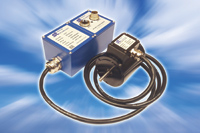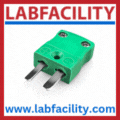
Posted to News on 19th Jul 2018, 00:00
A guide to the fundamentals of torque measurement
Torque is fundamental to most machines and other engineered systems, yet many people working in technology-based jobs are a bit sketchy on the basics, not to mention the finer details. Mark Ingham of Sensor Technology gives us a primer on the subject.

Jeremy Clarkson may not have contributed much to the education of the nation, but his multiple uses of the word ‘torque’ on prime time TV provides an introduction to an important technological concept. Most of his younger fans could correctly identify his favourite word as being ‘POWERRRR’, while his older followers will realise that he uses the word in two different ways. In an emotional context it relates to excitement that grows as a car accelerates; in a technical discussion it is a measure of an engine’s ability to move a car, and is often used in conjunction with the word ‘torque’.
Torque is in fact power applied in a rotary direction, or a twisting force about a fixed axis of rotation. It is used to drive car wheels and also conveyor belts, machine tools and the vast majority of other motor-driven machinery. Because most motors are rotary devices there is usually a mechanism to convert the rotary motion of the motor’s output shaft into the linear movement required by the machine.
Mathematically torque is measured in Newton-metres and can be expressed as
T = F * r * sinθ
where
T = torque
F = linear force = mass x acceleration
r = radius or distance from the point of rotation to where F is applied
θ (theta) = the angle between F and r
Moving from the theoretical to the practical, torque can be measured directly or indirectly. Direct measurement requires the use of special sensors, which can be quite delicate, fiddly to used and represent an element of expense in any project. For these reasons in many cases engineers opt to use indirect methods of torque measurement.
Torque can be calculated indirectly through measurement of the drive motor’s power multiplied by the efficiency of any mechanism between the motor and the driven load (or other point of measurement). Alternatively, it can be indirectly measured. One method is to affix a reaction arm or lever to the driven shaft which is sufficiently long so that it becomes possible to measure the torque as a linear force tangential to the free end of the arm. Another method involves using a brake to stop the driven shaft, the braking force being equal to the torque.
While these mechanical methods sound easy, high levels of inaccuracy can creep into such measurements due to mains power fluctuations, poor calibration, poor data recording, unknown additional losses, etc. Further, reaction arms (and sometimes the brakes) used for the measuring procedure have to be removed for normal operation of the machinery, so real time torque measurements are not possible.
The indirect methods for measuring toque are suitable in some situations, but not all. So over the years engineers have developed several methods for collecting reliable real-time torque measurements. In all such cases we can say that a torque sensor or transducer is used to convert torque into an electrical signal, and there are several ways to do this.
One of the most common ways is to use a strain gauge bonded to a rotating drive shaft. The shaft will naturally twist (rotationally deform) slightly in relation to the amount of torque it is subject to, which in turn deforms the strain gauge and changes its electrical resistance. A Wheatstone bridge circuit can then be used to convert the resistance change into a calibrated torque signal.
Typically slip rings are used to maintain contact with the stain gauge so that the electrical cabling that supplies power to the strain gauges and retrieves the signals from them does not wind itself around the rotating drive shaft.
Unfortunately slip rings are fiddly to set up and susceptible to wear and damage so need careful handling and constant maintenance. Further, as dust, dirt, oil and grease are present in many industrial installations brushes are required for maintaining clean slip rings; these cause drag and wear so need regular adjustment and are also another additional expense.
It is possible to replace troublesome slip rings with a radio telemetry system which both transmits power to the strain gauges (only a tiny amount of power is required) and collects the torque data as radio frequency transmissions. In general radio telemetry systems are reliable and easy to install and are low maintenance. These attributes are very important in applications such as test rigs where there is a need for frequent disassemble and reinstallation, while the lack of support bearings and other additional parts compensate for the higher initial cost compared to strain gauges.
There are several non-contact torque sensors available on the market. Some are of quite specialised designs, so while highly suitable for specific types of applications are less attractive in the majority of cases. Others are relatively difficult to fit and calibrate, so are only used in applications where they are in use for long periods.
Probably the most robust, reliable, easy to install and use is TorqSense, the wireless toque sensor from Sensor Technology. This is probably the world’s leading such device and actually uses piezo electric combs fixed to the drive shaft rather than conventional strain gauges. The combs are used to reflect radio waves from the adjacent transmitter back to the integral receiver and because they distort in proportion to the amount of torque in the shaft they provide an accurate real-time measurement of the power being transmitted to the driven machinery.
TorqSense has been used in many different types of applications around the world and is available in a wide range of sizes and formats to enhance its applicability. It also has a number of accessories and specialist software programmes that make the basic unit even more adaptable and attractive.
Apollo Park, Ironstone Lane
Wroxton
OX15 6AY
UNITED KINGDOM
+44 (0)1869 238400





